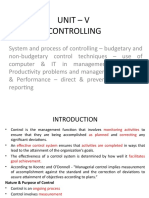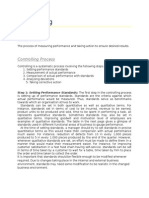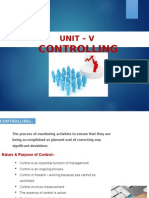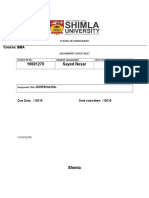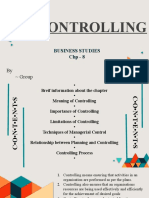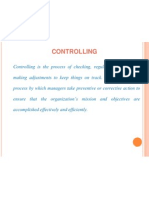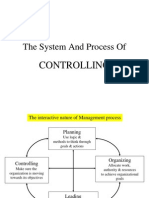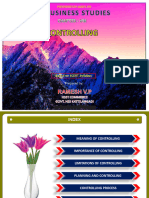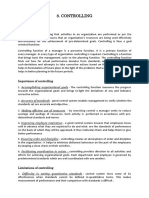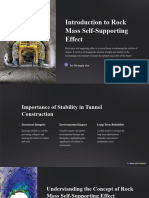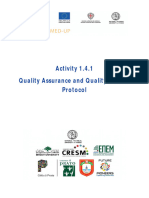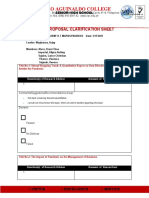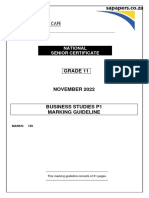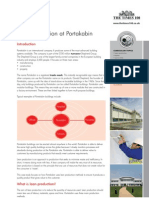0% found this document useful (0 votes)
27 views12 pagesControl
Planning and controlling are closely related management functions. Controlling involves measuring performance against standards, identifying deviations, and taking corrective actions. The basic control process includes establishing standards, measuring performance, comparing performance to standards, and taking corrective actions. Common control techniques include overall performance control, budgetary control, and non-budgetary controls such as benchmarking, statistical analysis, and audits. Productivity is a measure of input-output ratio over time with consideration for quality.
Uploaded by
Kunal singh RajpurohitCopyright
© © All Rights Reserved
We take content rights seriously. If you suspect this is your content, claim it here.
Available Formats
Download as TXT, PDF, TXT or read online on Scribd
0% found this document useful (0 votes)
27 views12 pagesControl
Planning and controlling are closely related management functions. Controlling involves measuring performance against standards, identifying deviations, and taking corrective actions. The basic control process includes establishing standards, measuring performance, comparing performance to standards, and taking corrective actions. Common control techniques include overall performance control, budgetary control, and non-budgetary controls such as benchmarking, statistical analysis, and audits. Productivity is a measure of input-output ratio over time with consideration for quality.
Uploaded by
Kunal singh RajpurohitCopyright
© © All Rights Reserved
We take content rights seriously. If you suspect this is your content, claim it here.
Available Formats
Download as TXT, PDF, TXT or read online on Scribd
/ 12



